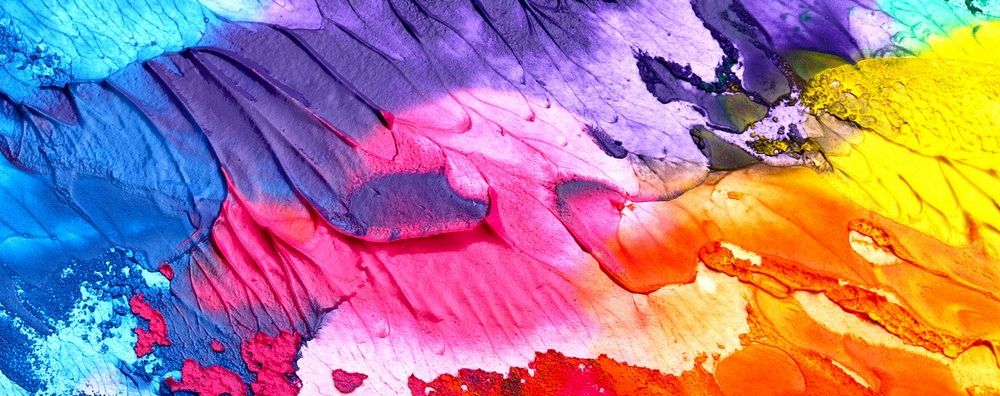The color wheel – An introduction

A “palette” is the colors that a watercolor painter has at his disposal. There are as many palettes as there are watercolor painters. Some want a large number of colors (perhaps to avoid mixing) others want to limit their palette for different reasons.
Elementary color theory
The spectrum of white light looks like this:

If you bend the spectrum into a circle, and even out the ratio between the colors so that they take up the same amount of space, you get a color wheel. In other words, this is a theoretical construction, but it actually works!

Light and dark colors
There are different designs of the color wheel, I myself prefer to have yellow at the top because it is the lightest color. (In fact, yellow is not brighter than, for example, violet, but our eyes are sensitive in that area, so we experience that color as brightest.)
Warm and cold colors
It is worth noting that what we experience as a warm or cold color is a perceived difference. There is no scientific, measurable difference between cold and warm in terms of colors, only a perceived difference. We have come to accept that the warmest is an orange red and the coldest is a blue-green. Thats how it is.
Primary Colors
There are three colors called primary colors, they are so named because you can mix them and get all the other colors. Either two of them or all three, however, the mixture always gets darker than the colors you mix. When you mix two or more colors, the result is always darker than the original colors.
They are marked in this color circle with a solid line. The three primary colors are:
Yellow (cold yellow, or lemon yellow as an artist would say.)
Red (cold red, or red-violet, ie not a “regular” red.)
Blue (cold blue, a little greenish.)
Complementary colors
Two colors that are opposite each other in the color wheel are called complementary colors. They should, when mixed with each other, give a gray (or black) color as a result. If you e.g. mixes blue and orange, the result should be gray. This is in theory, in reality it is difficult to find two colors that are really “opposite each other” in the color wheel.
Secondary colors
We ignored them … right. We also ignore the so-called Tertiary color.
Black and white

Since you get a darker color when two or more colors are mixed with each other, the result is that in the center of the color circle we have no color, i.e. black. White is usually illustrated in the peripheral part of the circle, i.e. outside the circle.

This illustration describes the colors that can be achieved with mixtures of the three primary colors. Inside the triangle are the possible color mixes that these three colors provide. It is thus impossible to mix a yellow and red primary color and get a pure orange, a slightly brownish orange can be mixed, but not a pure one.
You can see that e.g. the orange color mixtures are clearly blurred while the green and violet colors that these primary colors provide are more acceptable. This is because the sensitivity of the eye in the different areas,
The eye is particularly sensitive in the yellow part of the spectrum, we have the ability to see small changes in the mixture while in the violet or green area, in which the eye is much less sensitive, we do not notice that a color mixture is unclear












Does magenta qualify as a true primary color (red)? There are definitely some reds that make a neutral when mixed with another primary, particularly blue.
There is only one real primary red: quinacridone rose. Two primary colors never mix to a neutral color, they become a secondary color. Only two complementary colors give a neutral mixture. If you get such a result with two primary colors, they are very unclear or not primary colors.
True. That’s why they aren’t real primary colors. Instead of purple I got almost black by mixing red and blue. I think I mixed two warm colors and got that result.
I checked out my red name and numbers. It’s vermilion hue (PR188 and H5G). So it’s rather an orange, isn’t it? That’s why the purple was so off and looked neutral?
It is no wonder that the violet color mixture did not turn out well, vermilion is red-orange, far from primary red (the pigment has not been used for over 100 years, all that can be bought today are imitations). Try alizarin or quinacridone rose instead. Vermilion is almost a complementary color to blue, the mixture will be gray.
I’ve purchased the Q Red, what a difference! I’ve got the most beautiful violet ever.
Tack!
Thank you very much … I have now read for hours at your website … so many valuable informatio!